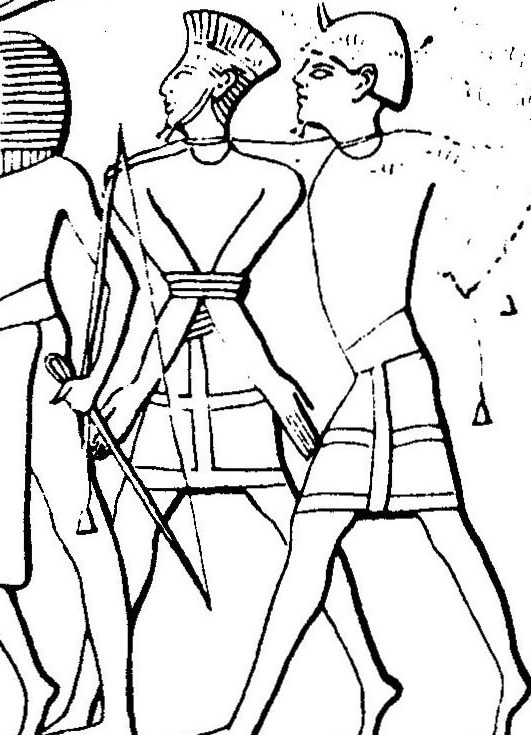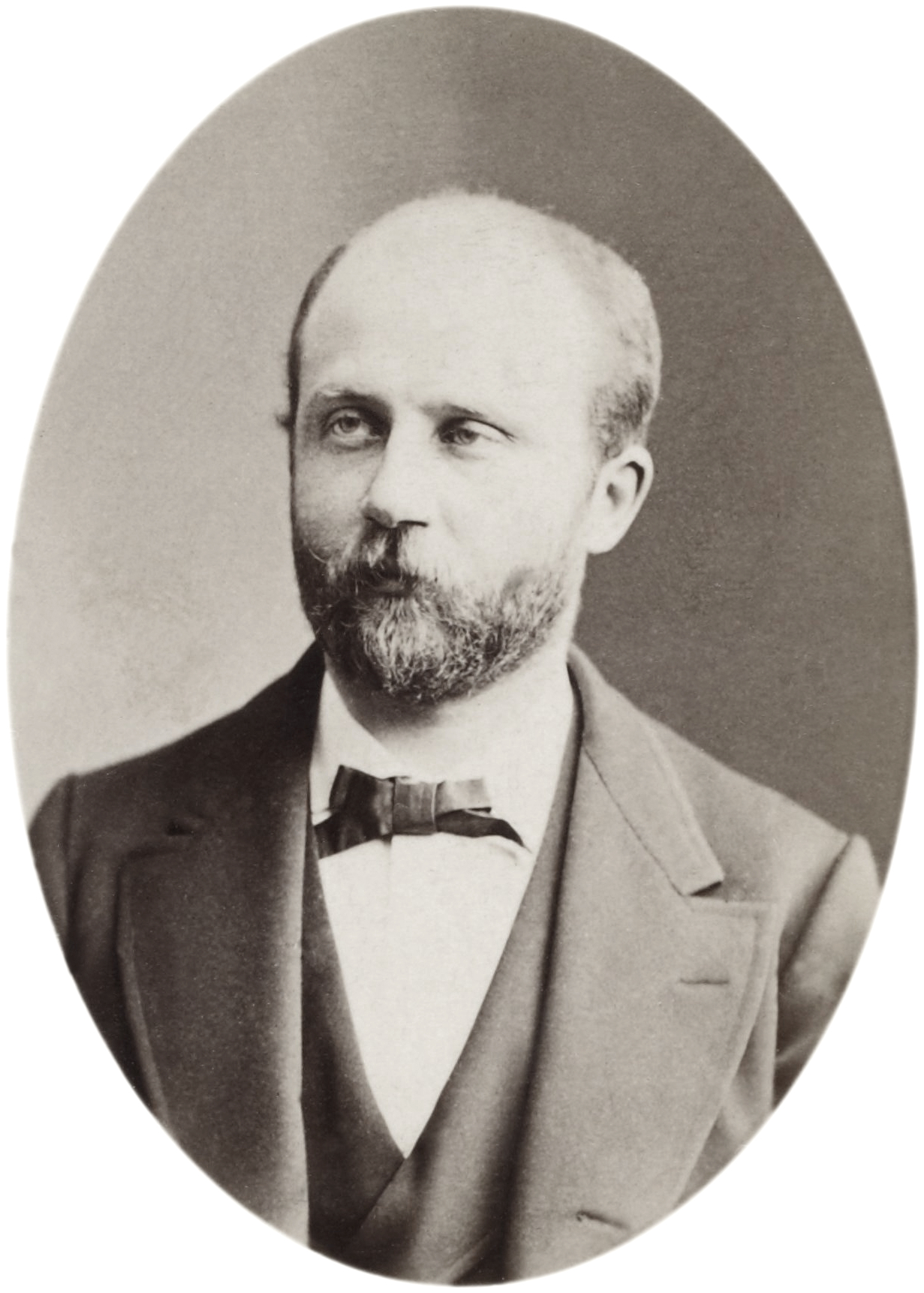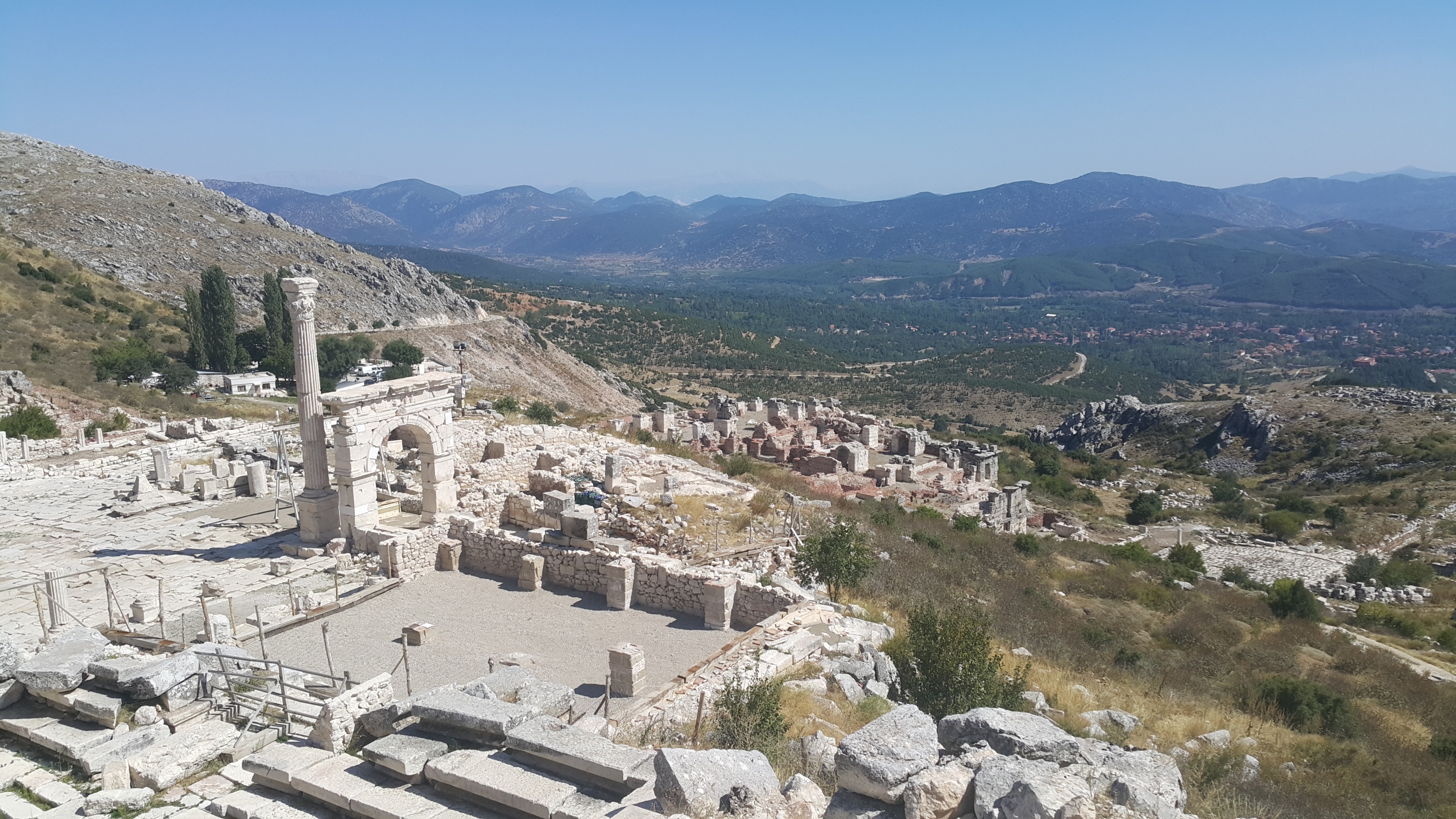|
Shekelesh
The Shekelesh (Egyptian language: ''šꜣkrwšꜣꜣ'' or ''šꜣꜣkrwšꜣꜣ'') were one of the several ethnic groups the Sea Peoples were said to be composed of, appearing in fragmentary historical and iconographic records in ancient Egyptian from the Eastern Mediterranean in the late 2nd millennium BC. Earliest records The Shekelesh first appears in Egyptian records during accounts of the pharaoh Merneptah's military campaigns in modern Libya in the closing years of the 13th century BC, as recounted on the Great Karnak Inscription. In the text, the Shekelesh, alongside other clans of the Sea Peoples, are described as auxiliary troops of the Libyan ruler Meryey, and Merneptah recounts he killed between 200 and 222 of them. Nearly thirty years later, the Shekelesh are mentioned within the exploits of Ramesses III, where they, along with the Peleset, Tjeker, Denyen, and Weshesh, are described as forming a foothold in the Amurru kingdom during the 8th year of his reign. Ramesses, ... [...More Info...] [...Related Items...] OR: [Wikipedia] [Google] [Baidu] |
Sea Peoples
The Sea Peoples are a hypothesized seafaring confederation that attacked ancient Egypt and other regions in the East Mediterranean prior to and during the Late Bronze Age collapse (1200–900 BCE).. Quote: "First coined in 1881 by the French Egyptologist G. Maspero (1896), the somewhat misleading term 'Sea Peoples' encompasses the ethnonyms Lukka, Sherden, Shekelesh, Teresh, Eqwesh, Denyen, Sikil / Tjekker, Weshesh, and Peleset (Philistines). [Footnote: The modern term 'Sea Peoples' refers to peoples that appear in several New Kingdom Egyptian texts as originating from 'islands' (tables 1–2; Adams and Cohen, this volume; see, e.g., Drews 1993, 57 for a summary). The use of quotation marks in association with the term 'Sea Peoples' in our title is intended to draw attention to the problematic nature of this commonly used term. It is noteworthy that the designation 'of the sea' appears only in relation to the Sherden, Shekelesh and Eqwesh. Subsequently, this term was applied ... [...More Info...] [...Related Items...] OR: [Wikipedia] [Google] [Baidu] |
Libya
Libya (; ar, ليبيا, Lībiyā), officially the State of Libya ( ar, دولة ليبيا, Dawlat Lībiyā), is a country in the Maghreb region in North Africa. It is bordered by the Mediterranean Sea to the north, Egypt to Egypt–Libya border, the east, Sudan to Libya–Sudan border, the southeast, Chad to Chad–Libya border, the south, Niger to Libya–Niger border, the southwest, Algeria to Algeria–Libya border, the west, and Tunisia to Libya–Tunisia border, the northwest. Libya is made of three historical regions: Tripolitania, Fezzan, and Cyrenaica. With an area of almost 700,000 square miles (1.8 million km2), it is the fourth-largest country in Africa and the Arab world, and the List of countries and outlying territories by total area, 16th-largest in the world. Libya has the List of countries by proven oil reserves, 10th-largest proven oil reserves in the world. The largest city and capital, Tripoli, Libya, Tripoli, is located in western Libya and contains over ... [...More Info...] [...Related Items...] OR: [Wikipedia] [Google] [Baidu] |
Meryey
Meryey was a king of ancient Libya (or the ''Libu''), during the late 13th century BC. He was the son of Ded. His reign was contemporary with pharaoh Merneptah of Egypt (1213-1203 BC). He is mentioned as the architect of a major military alliance amongst his nation, the Meshwesh, Lukka, and the Sea Peoples known as the Ekwesh, Teresh, Shekelesh, and the Sherden. This confederacy went to war against Merneptah in the western delta during the 5th and 6th years of his reign. The "Great chief Meryey" had 6 sons, all of whom were slain at Perire. He led a confederacy or an army of 40,000 men to war against Merneptah and, though successful at the beginning, was eventually defeated at Prosopis. Literary sources The Great Karnak Inscription describes the scene when Merneptah receives news of the attack: "... the third season, saying: 'The wretched, fallen chief of Libya, Meryey, son of Ded, has fallen upon the country of Tehenu with his bowmen — Sherden, Shekelesh, Ekwesh, Lukka, ... [...More Info...] [...Related Items...] OR: [Wikipedia] [Google] [Baidu] |
Sicels
The Sicels (; la, Siculi; grc, Σικελοί ''Sikeloi'') were an Italic tribe who inhabited eastern Sicily during the Iron Age. Their neighbours to the west were the Sicani. The Sicels gave Sicily the name it has held since antiquity, but they rapidly fused into the culture of Magna Graecia. History Archaeological excavation has shown some Mycenean influence on Bronze Age Sicily. The earliest literary mention of Sicels is in the ''Odyssey''. Homer also mentions Sicania, but makes no distinctions: "they were (from) a faraway place and a faraway people and apparently they were one and the same" for Homer, Robin Lane Fox notes. It is possible that the Sicels and the Sicani of the Iron Age had consisted of an Illyrian population who (as with the Messapians) had imposed themselves on a native, Pre-Indo-European ("Mediterranean") population. Thucydides and other classical writers were aware of the traditions according to which the Sicels had once lived in Central Italy, ea ... [...More Info...] [...Related Items...] OR: [Wikipedia] [Google] [Baidu] |
Merneptah
Merneptah or Merenptah (reigned July or August 1213 BC – May 2, 1203 BC) was the fourth pharaoh of the Nineteenth Dynasty of Ancient Egypt. He ruled Egypt for almost ten years, from late July or early August 1213 BC until his death on May 2, 1203 BC, according to contemporary historical records.Jürgen von Beckerath, ''Chronologie des Pharaonischen Ägypten'', Mainz, (1997), pp.190 He was the thirteenth son of Ramesses II,Gae Callender, ''The Eye Of Horus: A History of Ancient Egypt'', Longman Cheshire (1993), p.263 only coming to power because all his older brothers had died, including his full brother Khaemwaset or Khaemwase. By the time he ascended to the throne, he was probably around seventy years old. He is perhaps best known for his victory stele, featuring the first known mention of the name Israel. His throne name was ''Ba-en-re Mery-netjeru'', which means "The Soul of Ra, Beloved of the Gods". Family Merneptah was likely the fourth child born to Isetnofret I and Ra ... [...More Info...] [...Related Items...] OR: [Wikipedia] [Google] [Baidu] |
Tjeker
The Tjeker or Tjekker (Egyptian: ''ṯꜣkꜣr'' or ''ṯꜣkkꜣr'') were one of the Sea Peoples. Known mainly from the " Story of Wenamun", the Tjeker are also documented earlier, at Medinet Habu, as raiders defeated by Pharaoh Ramesses III of Egypt in years 5, 8, and 12 of his reign. They are thought to be the people who developed the port of Dor in Canaan during the 12th century BCE from a small Bronze Age town to a large city. Origin As with other Sea Peoples, the origins of the Tjeker are uncertain. Their name is an Egyptian exonym, usually romanized as ''tkr'', and expanded as ''Tjekru'' or ''Djekker''. The Egyptian may also be romanized as ''skl'', i.e. ''Sikil'' or ''Sical''. As such there is no consensus on the original form or etymology of the name, or the origin of the people. They have sometimes been identified with the Sicels of Sicily, who are also linked to ''Shekelesh'': another exonym attributed to a different group amongst the Sea Peoples. Another theory, put ... [...More Info...] [...Related Items...] OR: [Wikipedia] [Google] [Baidu] |
Peleset
The Peleset (Egyptian: ''pwrꜣsꜣtj'') or Pulasati were one of the several ethnic groups the Sea Peoples were said to be composed of, appearing in fragmentary historical and iconographic records in ancient Egyptian from the Eastern Mediterranean in the late 2nd millennium BC. Earliest records During the Bronze Age collapse, a seafaring coalition known as the Sea Peoples are recorded as conducting a number of raids and invasions in the East Mediterranean. After sacking numerous empires along the basin, the Sea Peoples engaged Ancient Egypt during the reign of Ramesses III, most famously at the Battle of the Delta, during which the invading force was decimated by the Egyptian army. One such group of the Sea Peoples recorded as participating in the Battle of the Delta were the ''Peleset'', who, according to Ramesses' own mortuary temple at Medinet Habu, were forcefully relocated by the pharaoh to southern Canaan, which at that time was upon the frontiers of the Egyptian Empire. ... [...More Info...] [...Related Items...] OR: [Wikipedia] [Google] [Baidu] |
Gaston Maspero
Sir Gaston Camille Charles Maspero (23 June 1846 – 30 June 1916) was a French Egyptologist known for popularizing the term "Sea Peoples" in an 1881 paper. Maspero's son, Henri Maspero, became a notable sinologist and scholar of East Asia. Early life Gaston Maspero was born in Paris in 1846 to Adela Evelina Maspero, born in Milan in 1822, daughter of a Milanese printer, and of an unnamed father, but identified by family tradition with Camillo Marsuzi de Aguirre, Italian revolutionary on the run. He was educated at the Lycee Louis-le-Grand, Jesuit boarding school and university at the ''École normale''. While at school he showed a special taste for history and became interested in Egypt following a visit to the Egyptian galleries of the Louvre at the age of fourteen. At university he excelled in Sanskrit as well as hieroglyphics. It was while Maspero was in final year at the ''École normale'' in 1867 that friends mentioned his skills at reading hieroglyphics to Egyptologi ... [...More Info...] [...Related Items...] OR: [Wikipedia] [Google] [Baidu] |
Anatolia
Anatolia, tr, Anadolu Yarımadası), and the Anatolian plateau, also known as Asia Minor, is a large peninsula in Western Asia and the westernmost protrusion of the Asian continent. It constitutes the major part of modern-day Turkey. The region is bounded by the Turkish Straits to the northwest, the Black Sea to the north, the Armenian Highlands to the east, the Mediterranean Sea to the south, and the Aegean Sea to the west. The Sea of Marmara forms a connection between the Black and Aegean seas through the Bosporus and Dardanelles straits and separates Anatolia from Thrace on the Balkan peninsula of Southeast Europe. The eastern border of Anatolia has been held to be a line between the Gulf of Alexandretta and the Black Sea, bounded by the Armenian Highlands to the east and Mesopotamia to the southeast. By this definition Anatolia comprises approximately the western two-thirds of the Asian part of Turkey. Today, Anatolia is sometimes considered to be synonymous with Asian ... [...More Info...] [...Related Items...] OR: [Wikipedia] [Google] [Baidu] |
Egyptian Language
The Egyptian language or Ancient Egyptian ( ) is a dead language, dead Afroasiatic languages, Afro-Asiatic language that was spoken in ancient Egypt. It is known today from a large Text corpus, corpus of surviving texts which were made accessible to the modern world following the decipherment of ancient Egyptian scripts, decipherment of the ancient Egyptian scripts in the early 19th century. Egyptian is one of the List of languages by first written accounts, earliest written languages, first being recorded in the Egyptian hieroglyphs, hieroglyphic script in the late 4th millennium BC. It is also the longest-attested human language, with a written record spanning over 4000 years. Its classical language, classical form is known as Middle Egyptian, the vernacular of the Middle Kingdom of Egypt which remained the literary language of Egypt until the Egypt (Roman province), Roman period. By the time of classical antiquity the spoken language had evolved into Demotic (Egyptian), Dem ... [...More Info...] [...Related Items...] OR: [Wikipedia] [Google] [Baidu] |
Sagalassos
Sagalassos ( el, Σαγαλασσός), also known as Selgessos ( el, Σελγησσός) and Sagallesos ( el, Σαγαλλησός), is an archaeological site in southwestern Turkey, about 100 km north of Antalya (ancient Attaleia) and 30 km from Burdur and Isparta. The ancient ruins of Sagalassos are 7 km from Ağlasun (as well as being its namesake) in the province of Burdur, on Mount Akdağ, in the Western Taurus mountains range, at an altitude of 1450–1700 metres. In Roman Imperial times, the town was known as the "first city of Pisidia", a region in the western Taurus mountains, currently known as the Turkish Lakes Region. During the Hellenistic period it was already one of the major Pisidian towns. Introduction The urban site was laid out on various terraces at an altitude between 1400 and 1600 m. After suffering from a major earthquake in the early sixth century CE, the town managed to recover, but a cocktail of epidemics, water shortages, a g ... [...More Info...] [...Related Items...] OR: [Wikipedia] [Google] [Baidu] |
Eduard Meyer
Eduard Meyer (25 January 1855 – 31 August 1930) was a German historian. He was the brother of Celticist Kuno Meyer (1858–1919). Biography Meyer was born in Hamburg and educated at the Gelehrtenschule des Johanneums and later at the universities of Bonn and Leipzig. After completing his studies, he spent one year in Istanbul. In 1879, he went to the University of Leipzig as privatdocent. He was appointed professor of ancient history at Breslau in 1885, at Halle in 1889, and at Berlin in 1902. He lectured at Harvard in 1909 and the University of Illinois, Urbana-Champaign in 1910. Honorary degrees were given him by Oxford, St. Andrews, Freiburg, and Chicago universities. He died in Berlin. Egyptology In 1904 Meyer was the first to note the Sothic cycle of the Heliacal rising of Sirius, which forms the basis for the traditional chronology of Egypt. Works His principal work is his "''Geschichte des Altertums''" (1884-1902; third edition, 1913). He also published: * ''Forsch ... [...More Info...] [...Related Items...] OR: [Wikipedia] [Google] [Baidu] |


_and_Tsakkaras_(painting).png)



